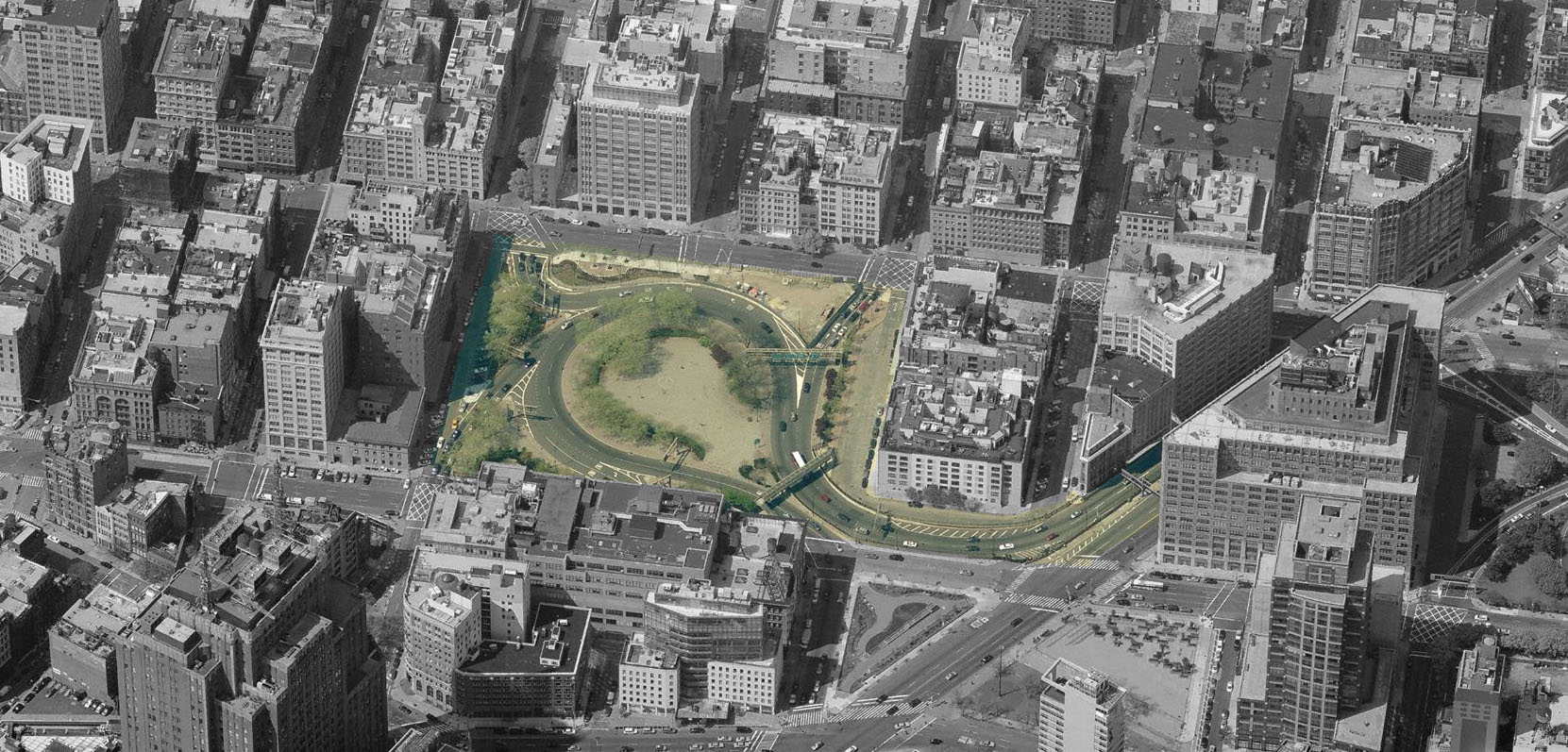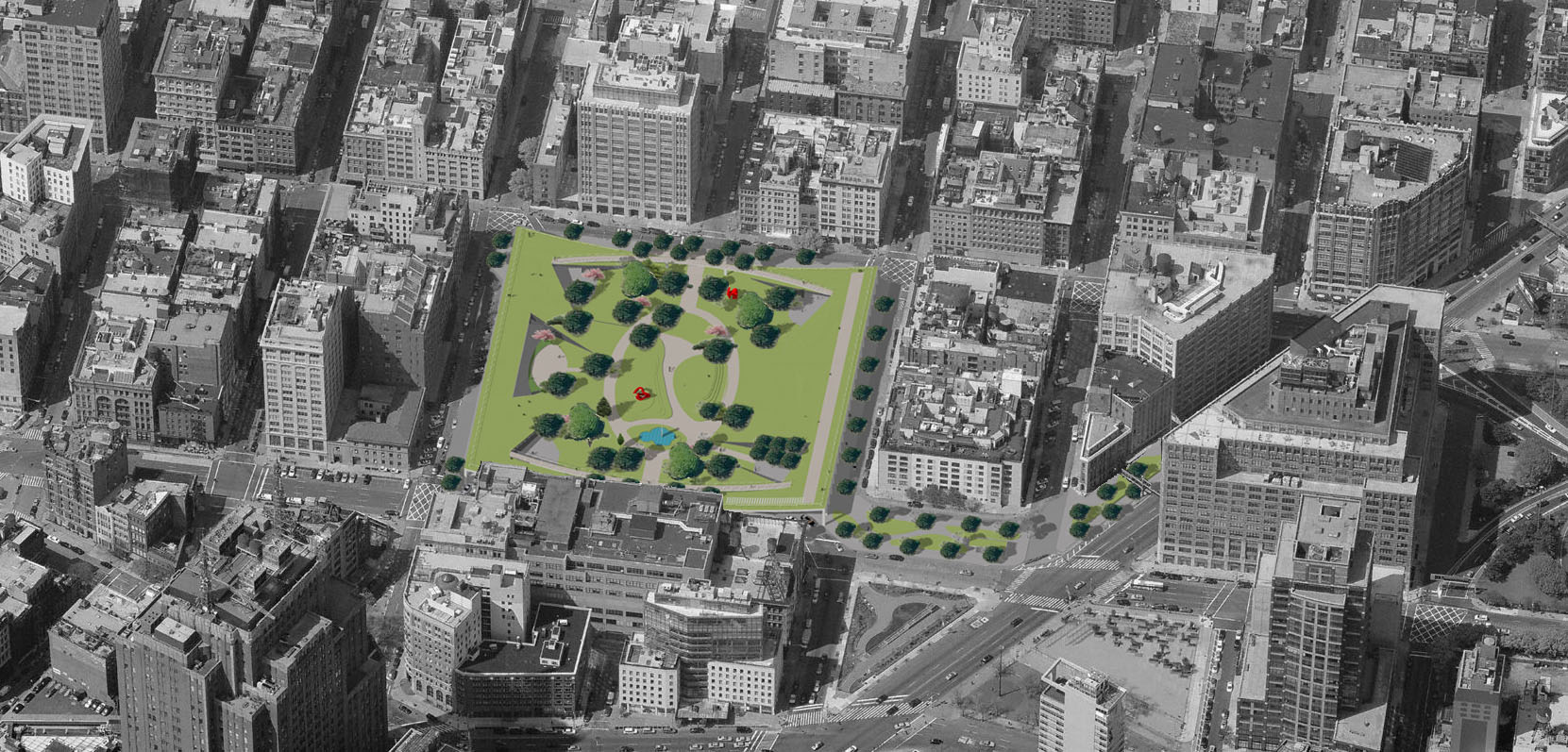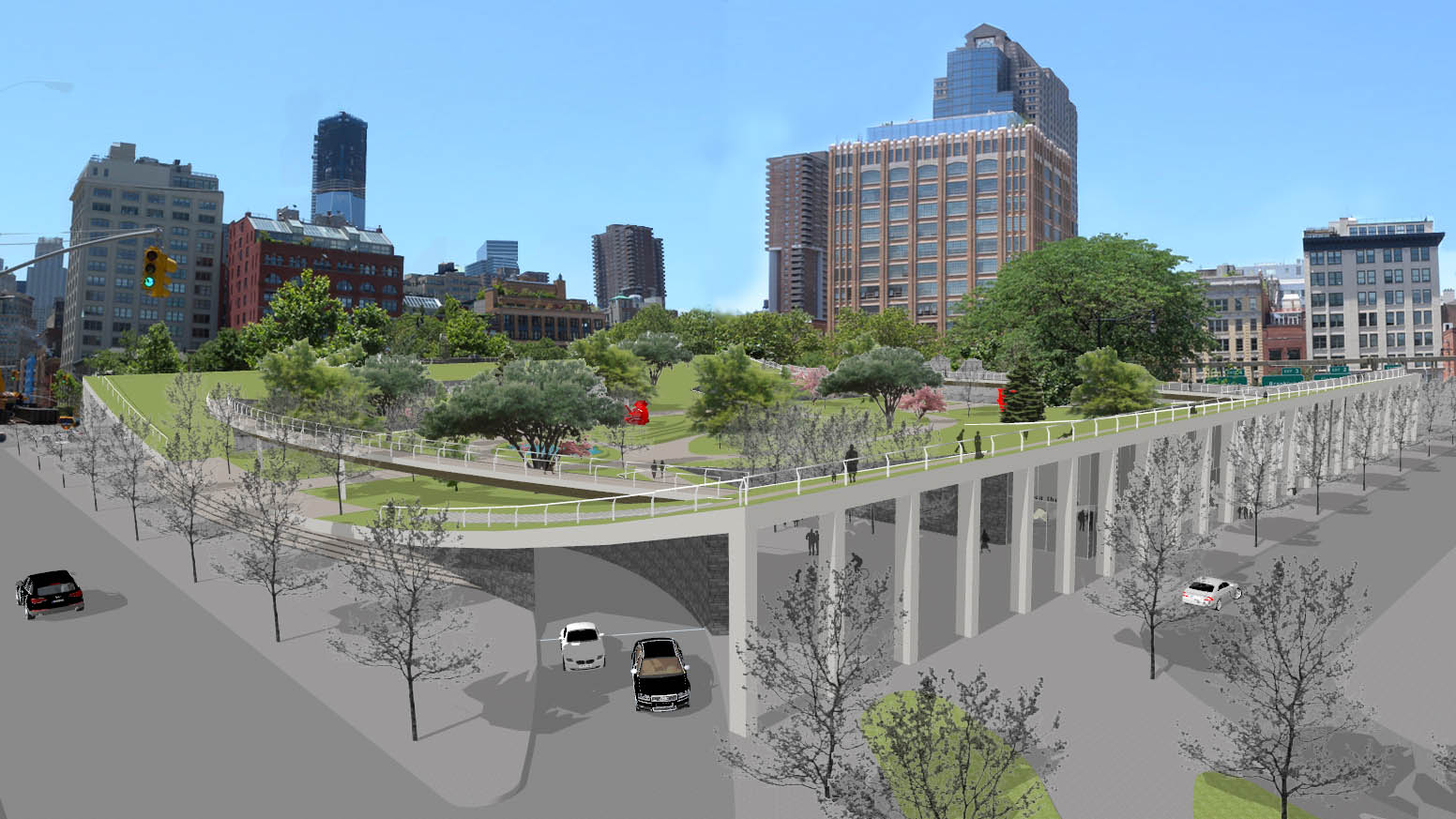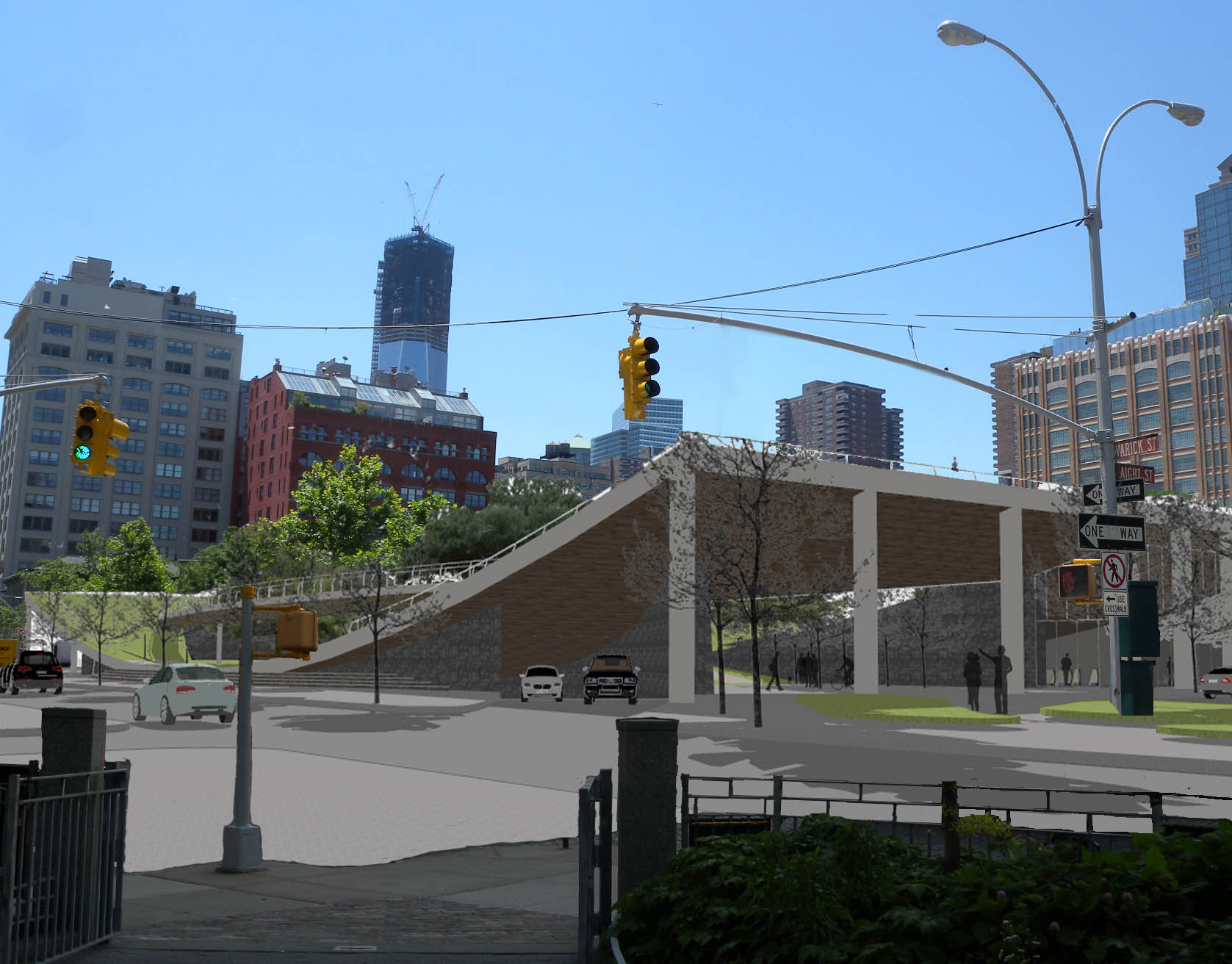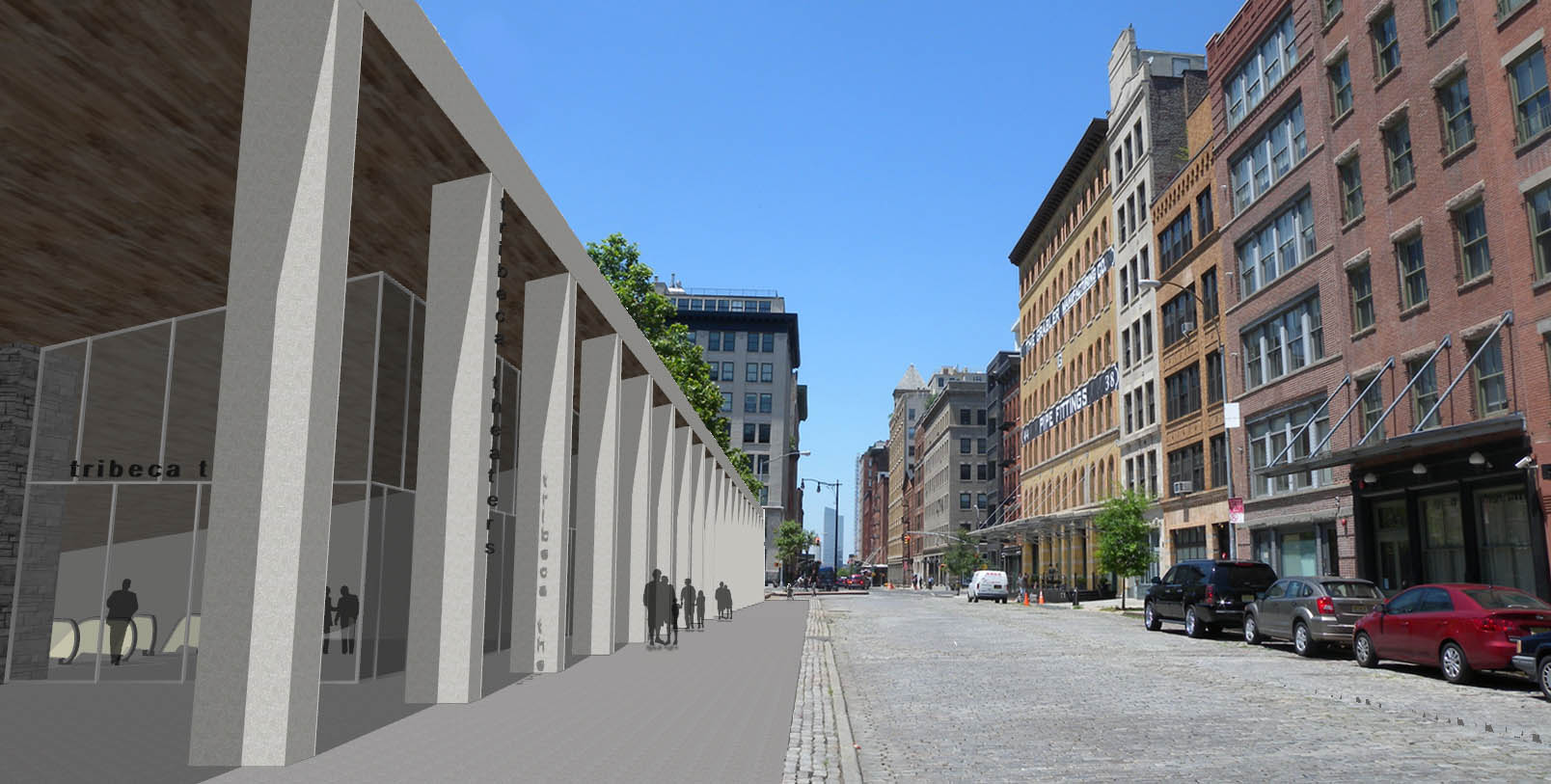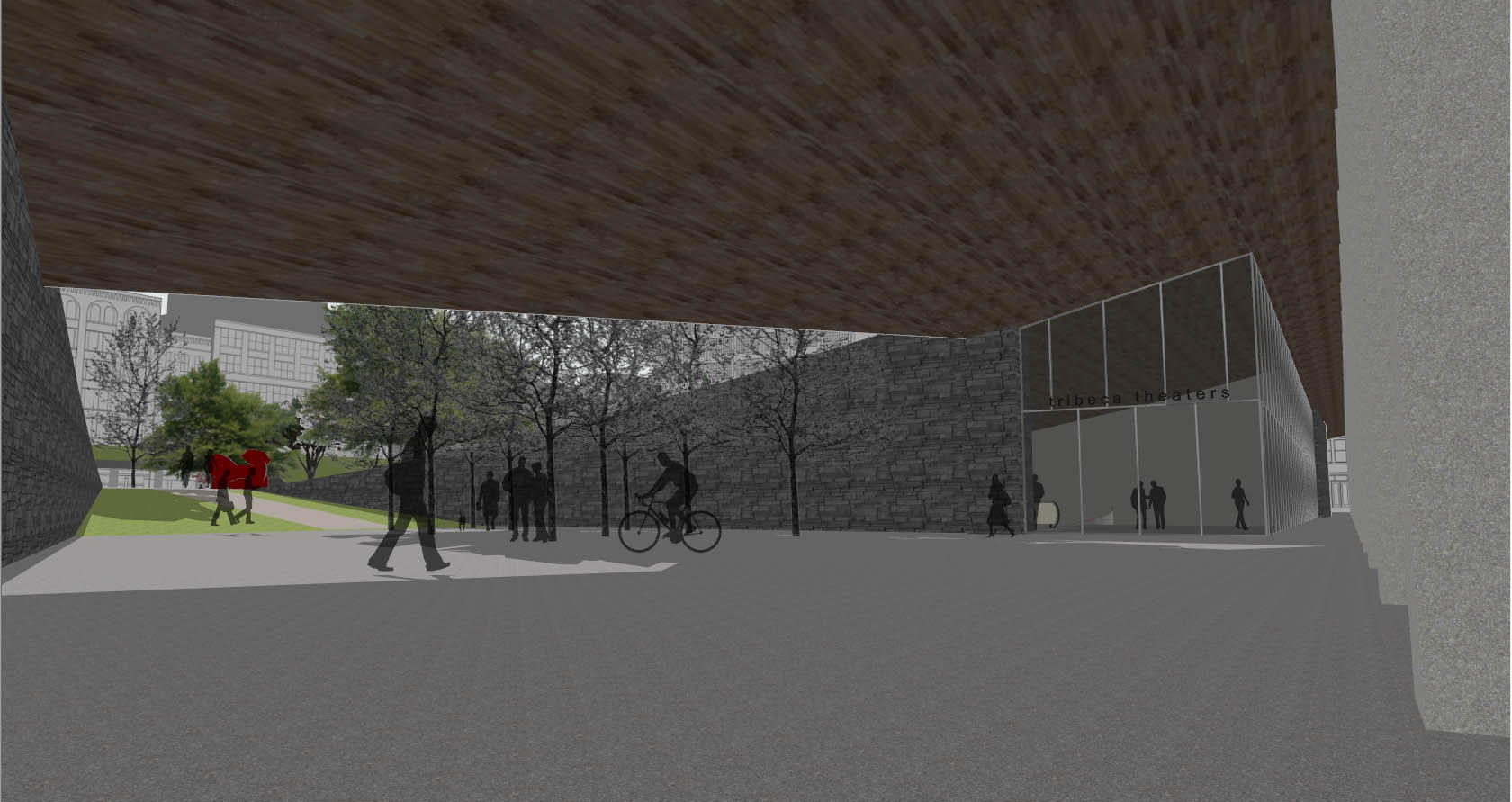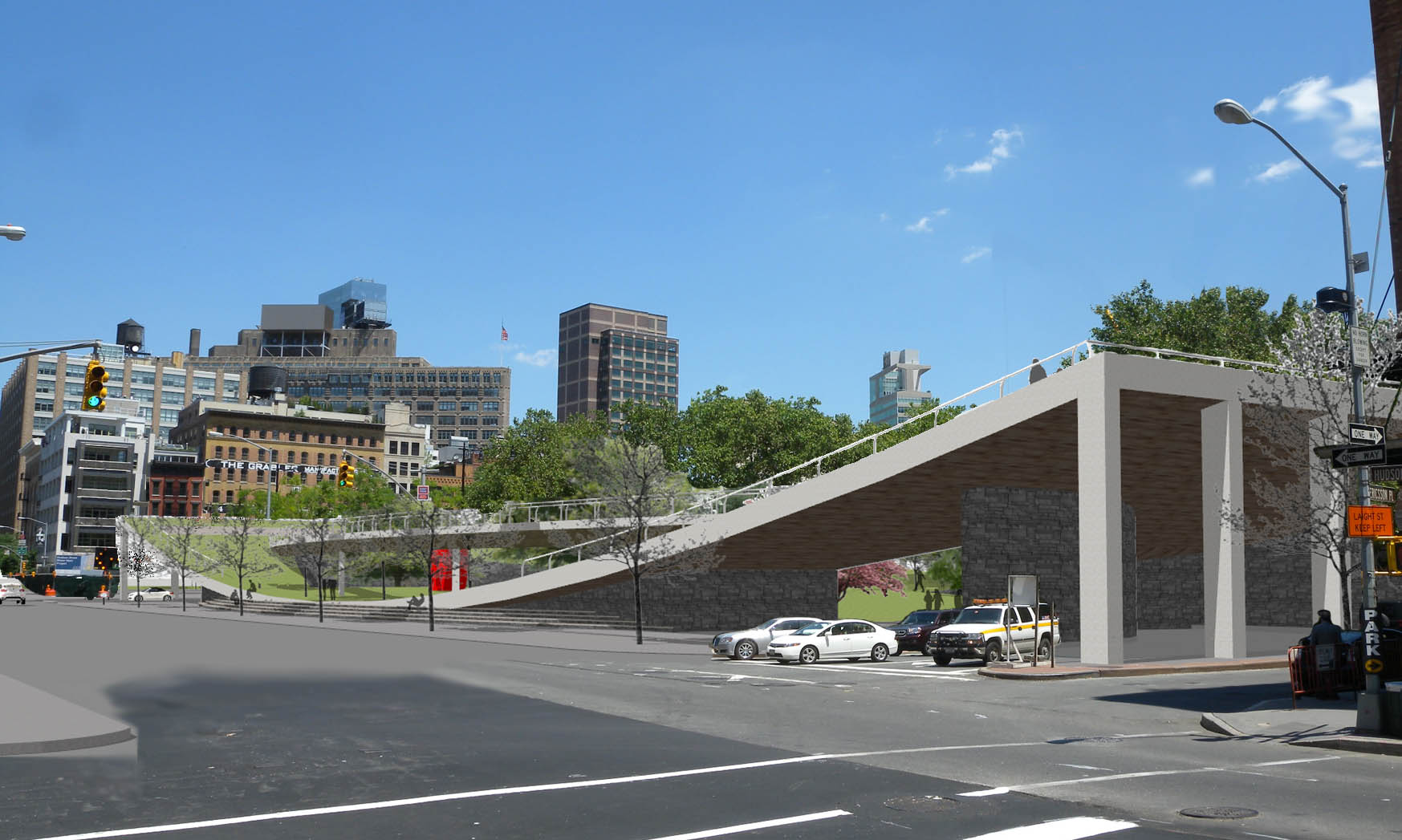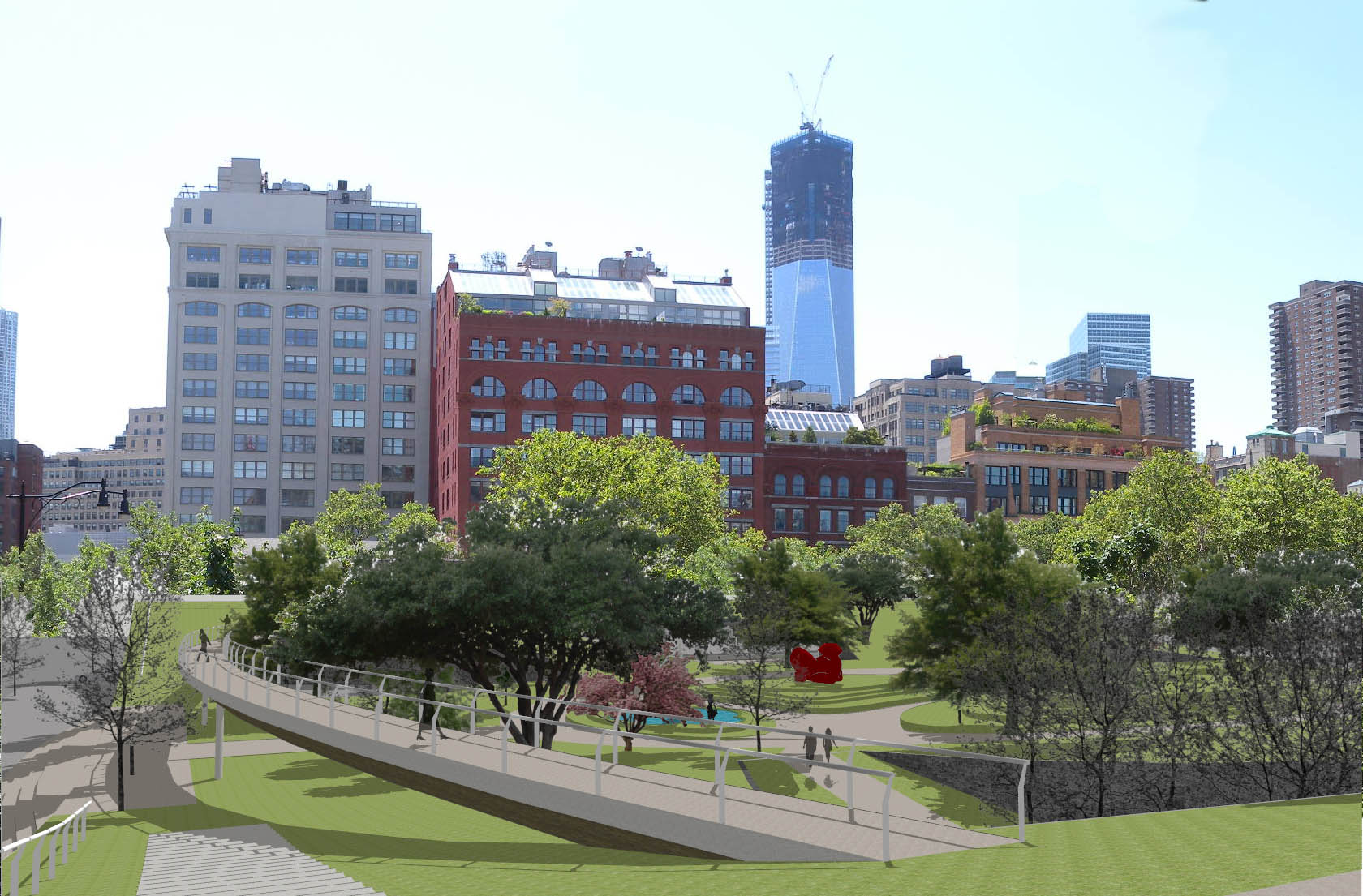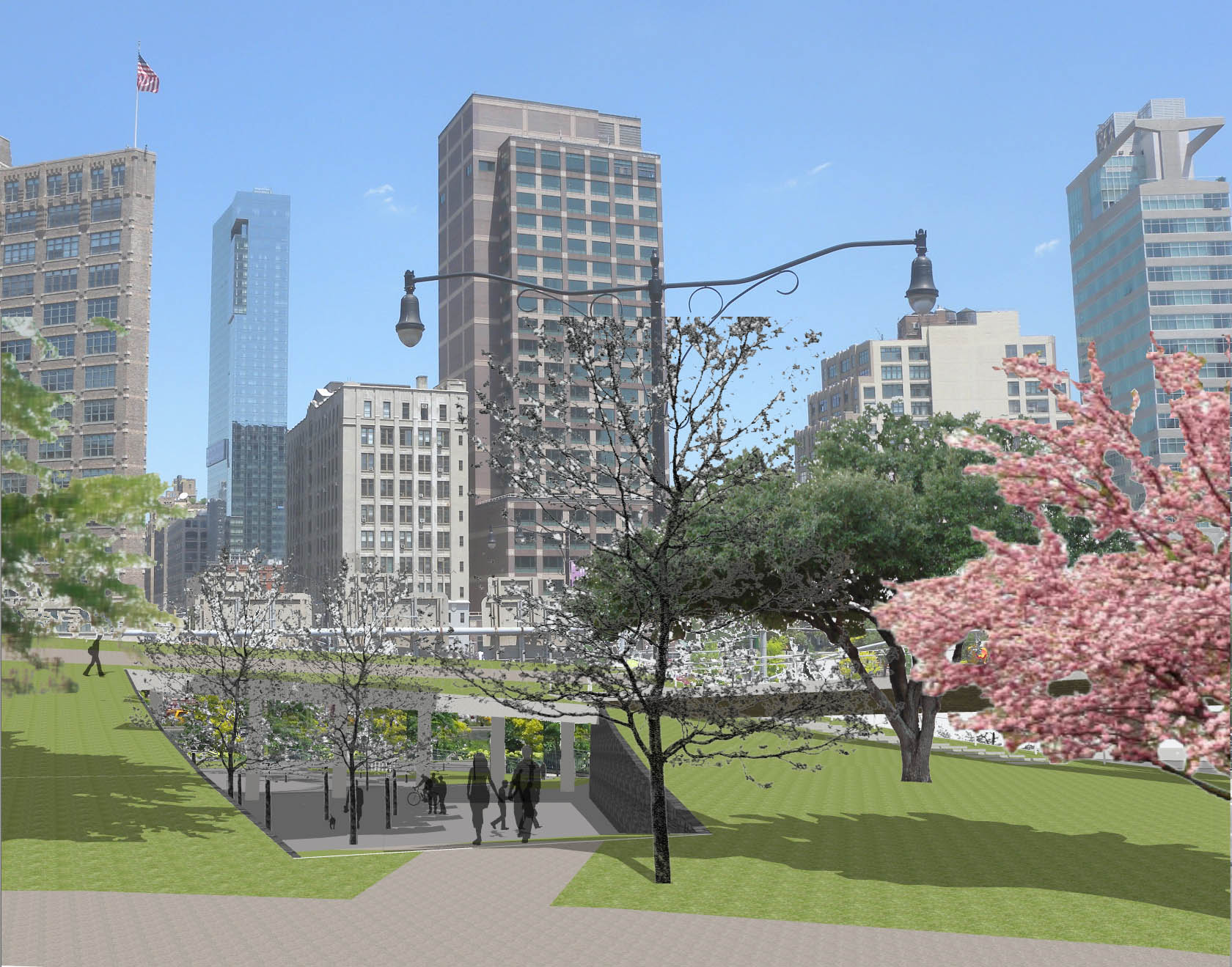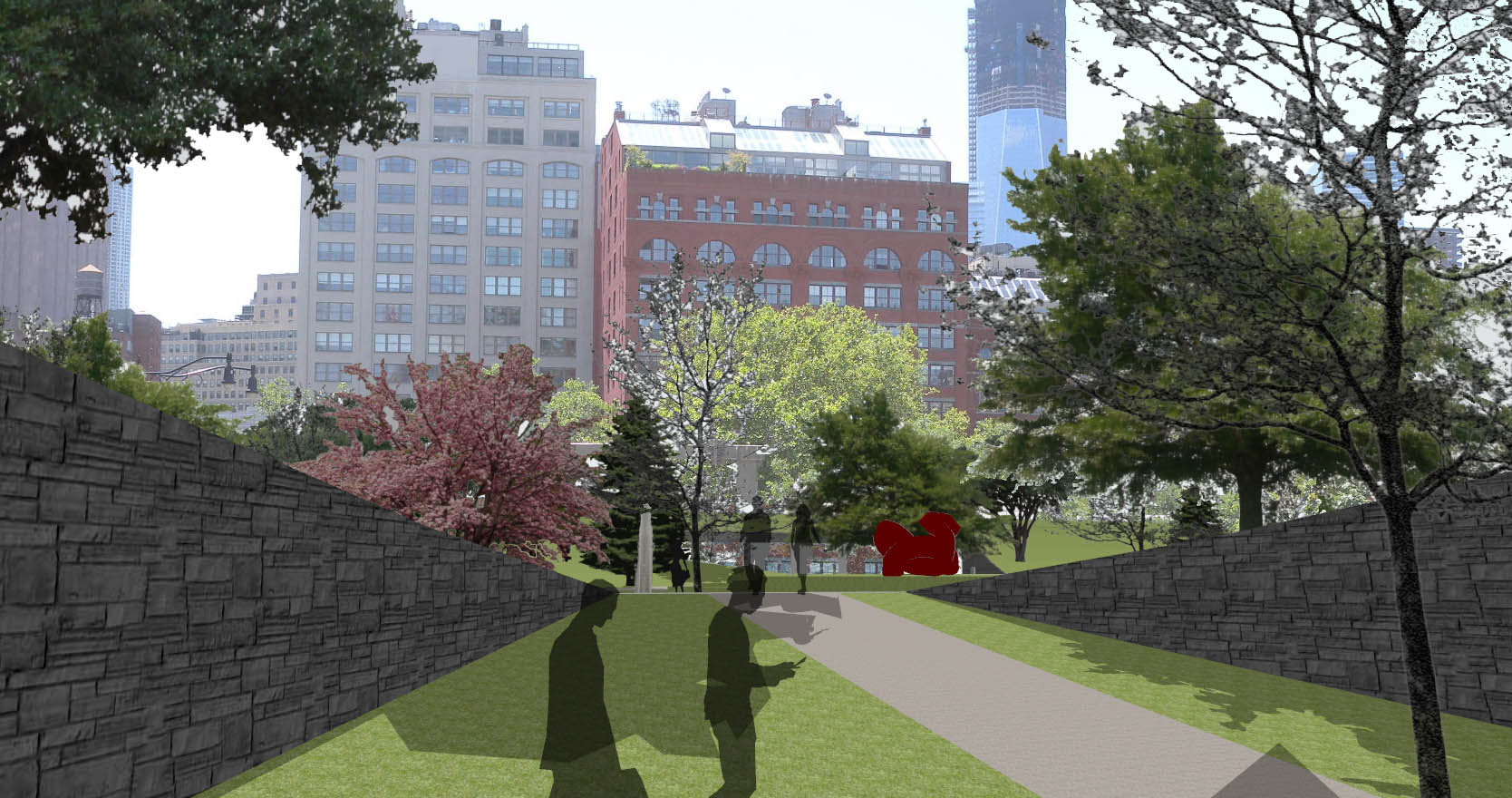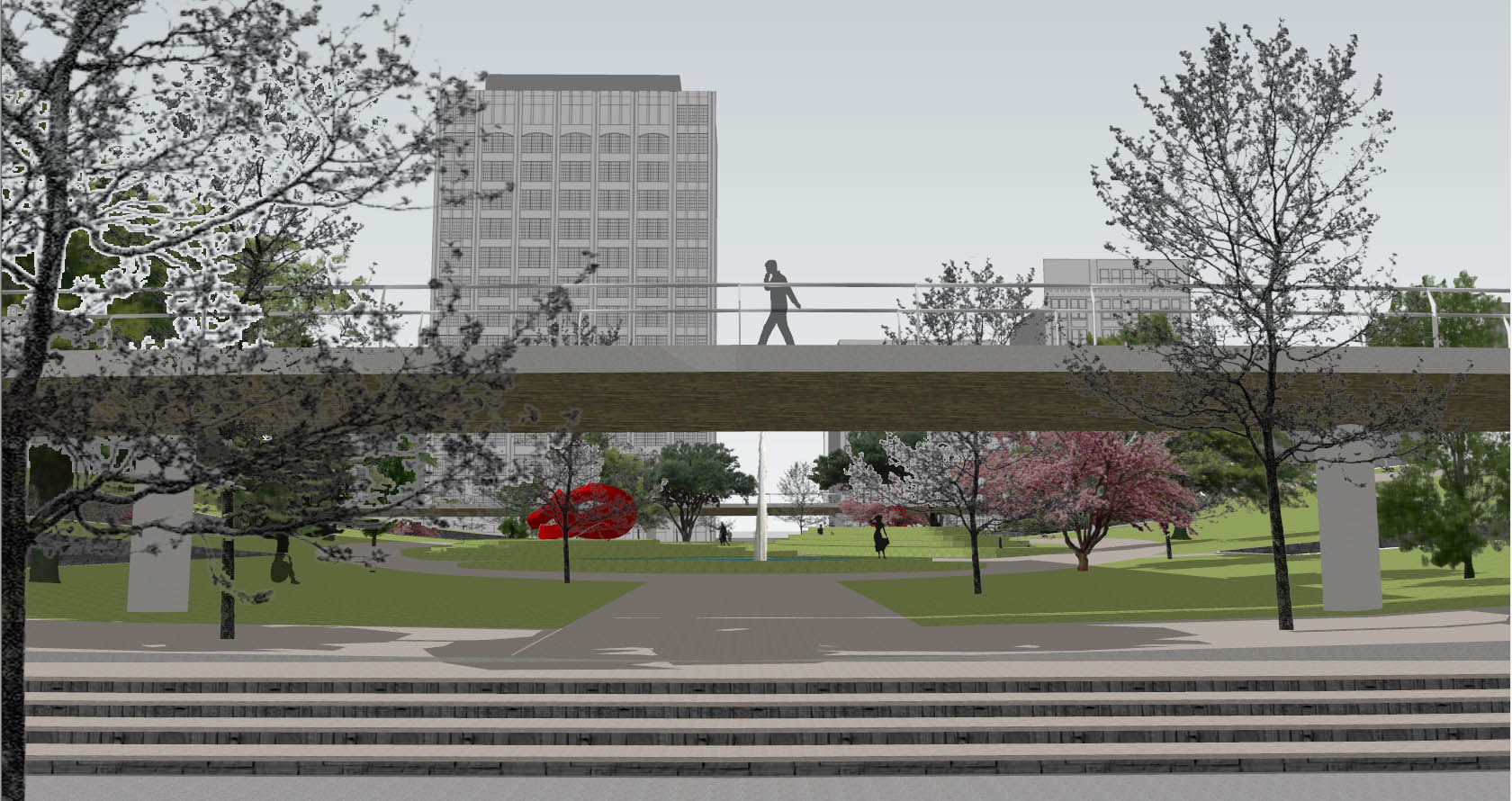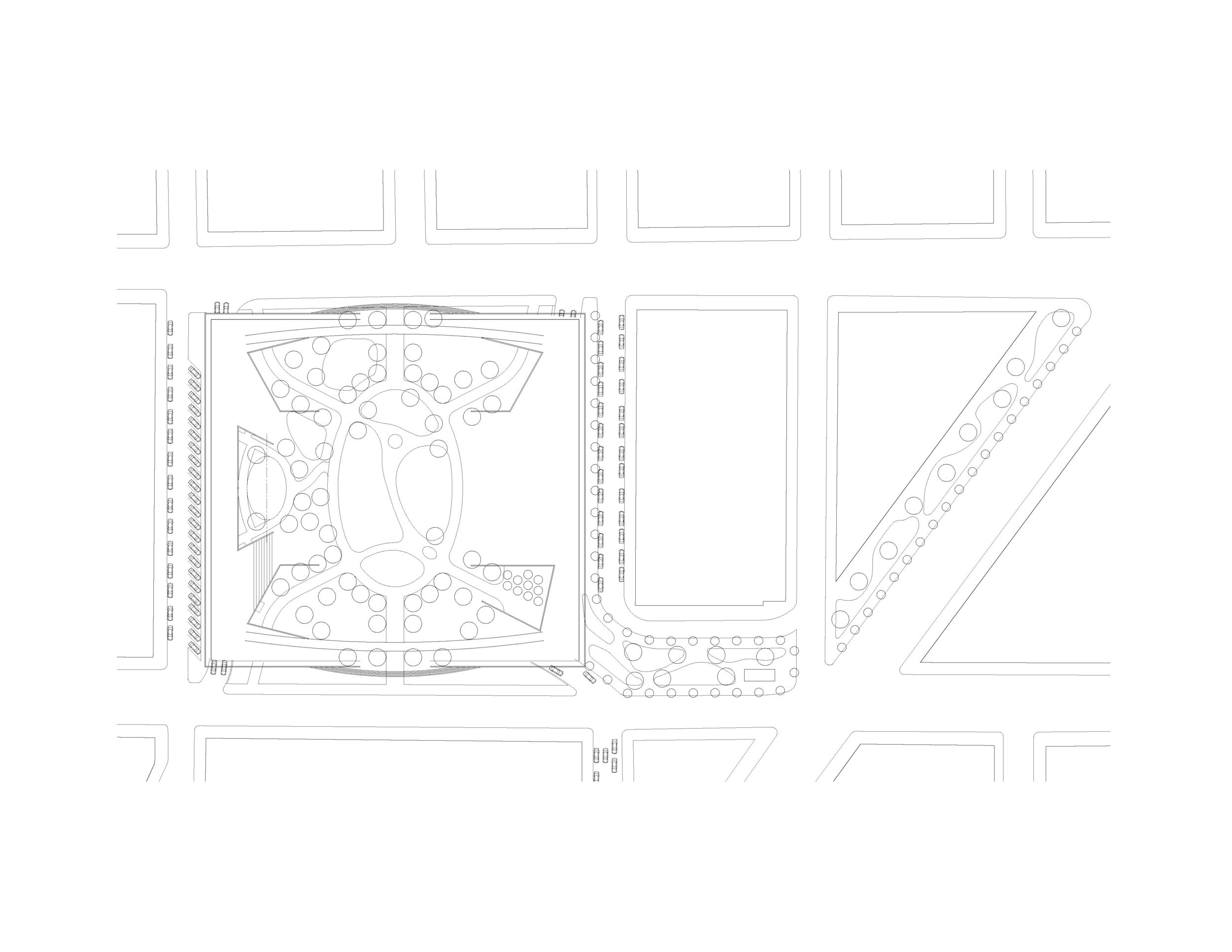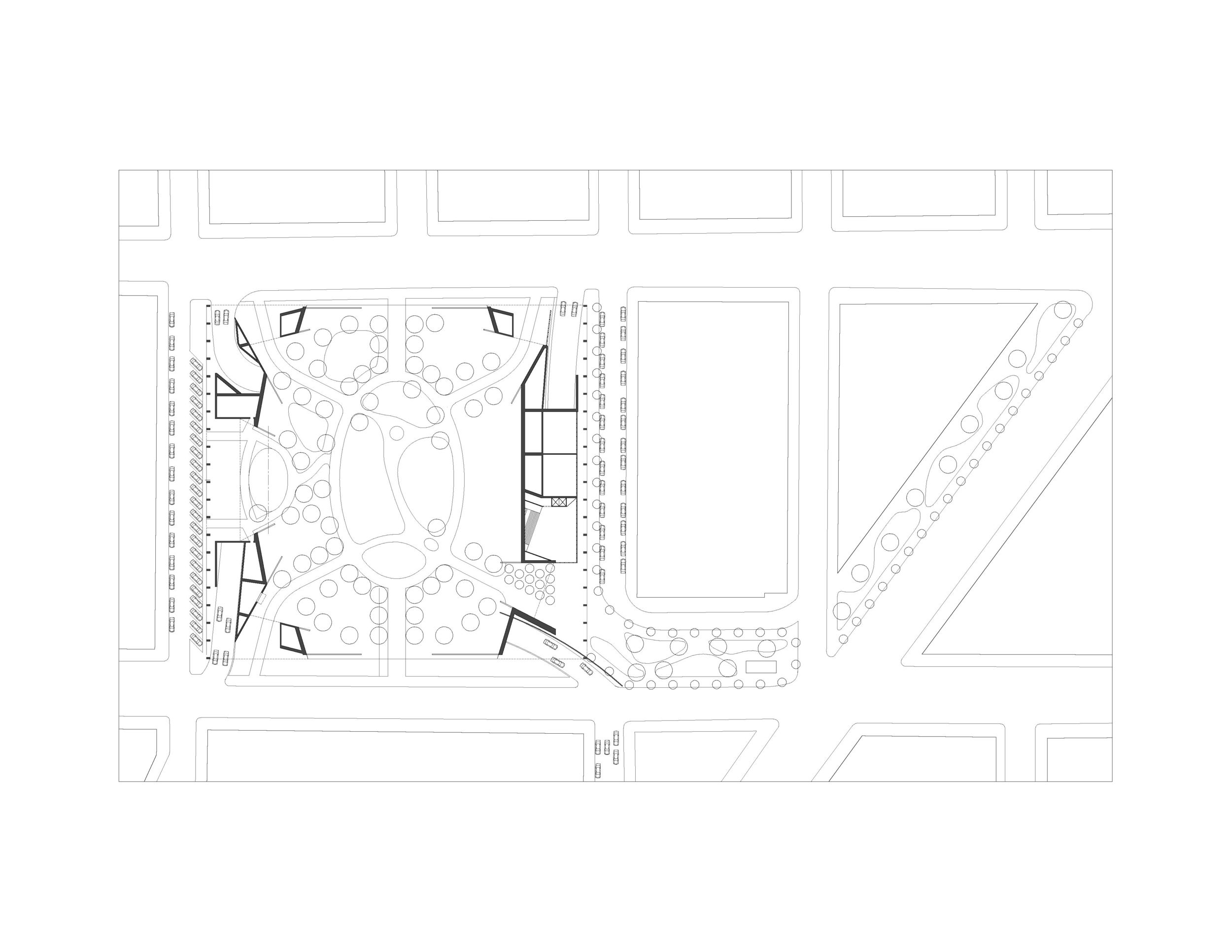St. Johns Park, Tribeca NY
The proposal Re-visioning St. Johns Park is situated on a 4 acre city block in Tribeca NYC. Today, five exits form a circular rotary roadway contained within the square with the inner portion of the park inaccessible to pedestrians. This area is notorious for noise, traffic, air pollution and unsafe for pedestrians to connect across.
The objective of this proposal is to solve the present problems and provide Tribeca and the surrounding downtown neighborhoods with a new dynamic green landscaped terrain and cultural space for visitors to gather for leisure and cultural events with new pathways for pedestrians to safely reconnect across the neighborhoods.
The design proposal calls for a constructed sectional solution by locating the surface roadway to tunnel below grade with the car exiting to the city streets via ramps at the four corners. Above, on street level, a sloping arc concrete platform surface forms the structure of the new park which gently elevates at the north & south ends and touches down at the middle. As a result of the sectional separation of the pedestrian and cars a new opportunity for an open green space is rediscovered.
Pedestrian access into the park is at the middle cross-axis and at the four corners through void cutout in the sloping platform while cars which emerge via ramps below the elevated platform. The landscape consist of new and replanted trees organize in intimate green zones and a series of paved pathways and elevated steel frame walkway allow for new dynamic views and connection back to the city.
The land St. Johns Park sits on in Tribeca was used for many purposes since the colonization of New Amsterdam in the early 17th century. Today, five exits form a circular road (rotary) contained within the square with the inner portion of the square park inaccessible to pedestrians. This area is notorious for noise, traffic, air pollution, unsafe for pedestrians to connect across. The manufacturing function of the past has moved on and the warehouse buildings’ surrounding the square over time has all been converted to artist work spaces, upscale residential lofts and apartments and is again one of the city's most desirable neighborhood.
Owned by Trinity Church, St. Johns Church was constructed on Varick Street in 1803 and the park staked out across the street called Hudson Square. By the 1820s, the city’s expansion north had made Hudson Square a desirable place upscale neighborhood to live with town homes for the well to do surrounding the square. But as the city grew, the expanding warehouse district began to encroach on the neighborhood, and its seclusion was shattered in 1851 when the Hudson River Railroad ran tracks along Hudson Street. This caused well to do homeowners moved elsewhere and St John’s Chapel went into financial difficulty.
Not long after in 1866, Trinity parish sold the park to Commodore Cornelius Vanderbilt, who built a freight terminal on the site for the Hudson River Railroad. The freight terminal was demolished in 1927 to make room for the eastbound exits of the Holland Tunnel.
